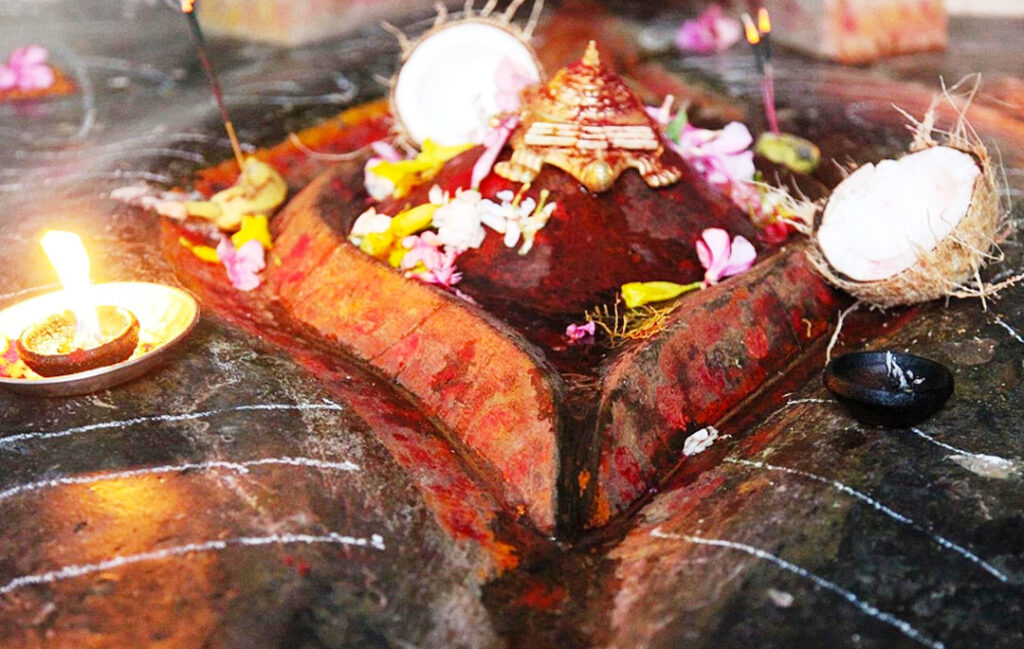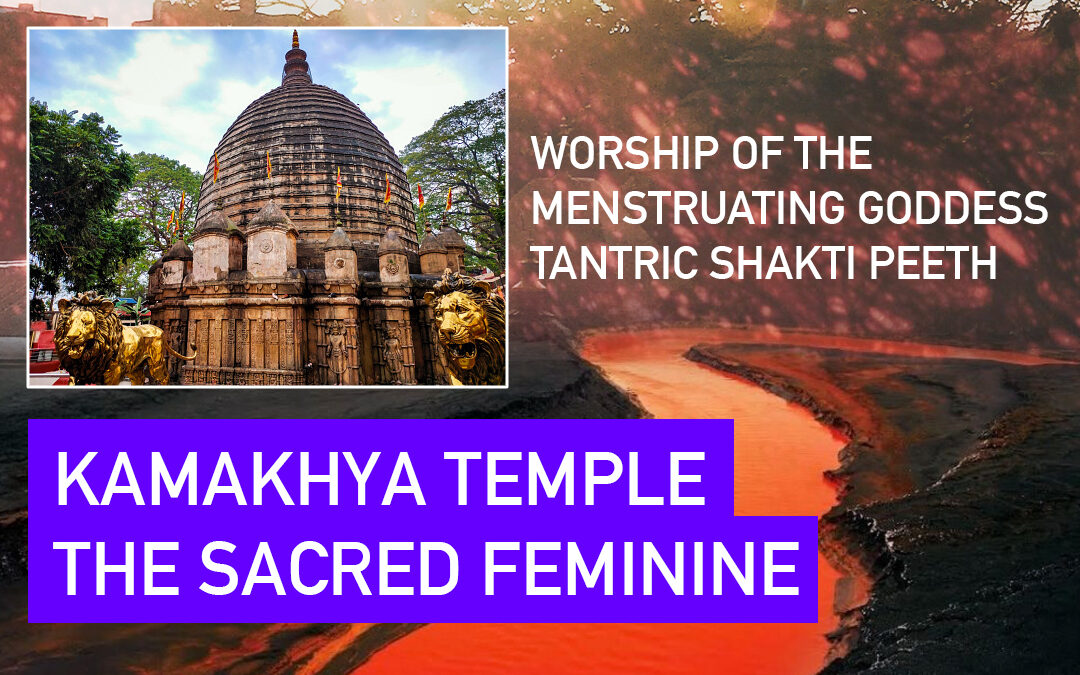Kamakhya in north-east India in Assam is regarded as the most revered site of goddess worship in South Asia. Dating back to the 8th century CE, Kamakhya is described in early textual sources as the centre of Tantra. This philosophy affirmed the world as a manifestation of Shakti, the divine feminine power.
Tantric rituals are still carried out to this day at the temple. Pilgrims descend into its inner sanctum Garbagriha (womb chamber), a dark cave-like space, encounter a fissure in a large rock venerated by devotees of Shakti as the yoni or vulva of the goddess, and has made the temple famous as a Seat of Power (Shakti Pitha).
According to the Tantric view, Shakti pervades the material world. It can be ritually channelled and internalised to reach a spiritually enlightened state to cultivate worldly success and even supernatural abilities.
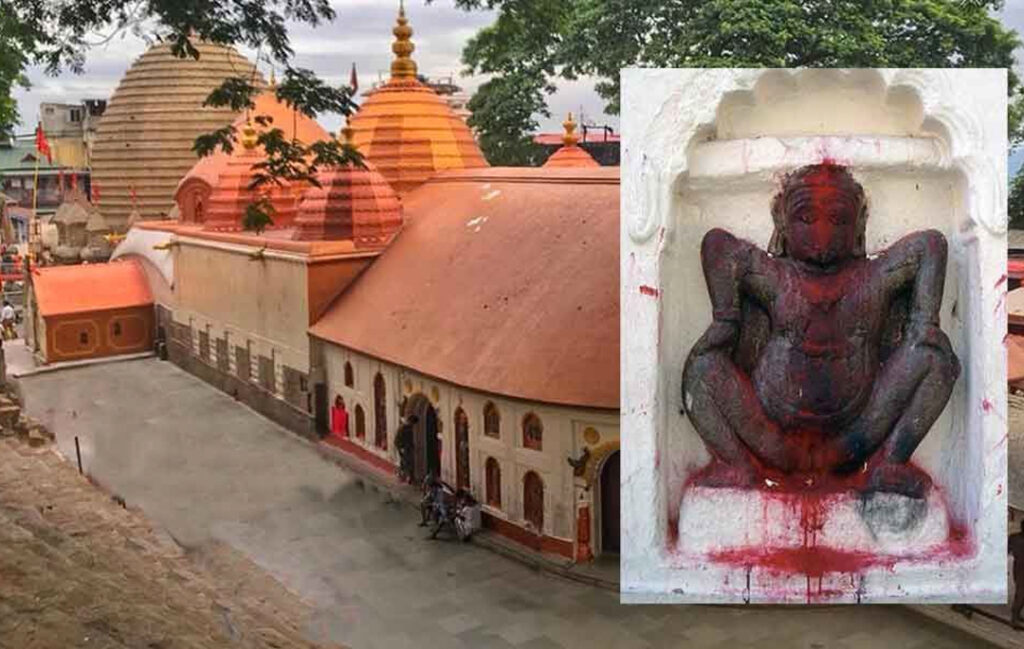
Every Summer at Kamakhya, the Ambuvachi Mela (issuing fourth of the rain festival) celebrates the goddess’s annual menstrual flow, which is believed to nourish the Earth. How powerful and respectful is this! This festival occurs every June-July during the monsoon and is closely connected to the agricultural cycle. During this time of year, water from an underground spring runs red with iron oxide from the soil, trickling over the yoni in the temple’s inner sanctum to appear as if the goddess is menstruating.
By engaging with the transgressive and the taboo (either literally or symbolically), the repressed powers of traditionally forbidden practices and substances can be harnessed. At Kamakhya, reddened pieces of cloth wrapped around the yoni are sought after by pilgrims and prized for their talismanic, protective and life-giving properties. The power of the yoni and its menstrual fluids are viscerally conveyed to visitors by a sculpture depicting Maa Shakti.
Devotees regularly anoint her pudendum with reg pigment or sindoor to receive her blessing as an embodiment of fertility and creative power.
The points mentioned above are revolutionary! According to orthodox Hindu belief, menstrual blood is considered impure or a pollutant, but at Kamakhya, it is channelled for its auspiciousness and potency. Tantra not only validates and affirms all aspects of the female body, regarded as a vessel of Shakti but also challenges cultural distinctions between purity and impurity.
There are numerous representations of goddesses in and around the Kamakhya temple site. All are understood as manifestations of Shakti, their characteristics reflecting a uniquely Tantric tension between the destructive and the maternal. One depicts the skeletal goddess Chamunda, clutching a skull cup filled with blood to satiate her ravenous hunger. She is seated on a human corpse, evoking the world of the cremation ground. In one of her other four hands, she carries a sword of wisdom with which she destroys demons (asuras) on the cosmic battlefield and the devotee’s ego, symbolised by the corpse and the garland of decapitated heads around her neck. Her violent appearance, while inspiring awe and fear, also conveys compassion and her desire to assist followers on their path towards enlightenment by releasing them from ignorance. Pilgrims at the temple regularly leave her offerings of flowers.
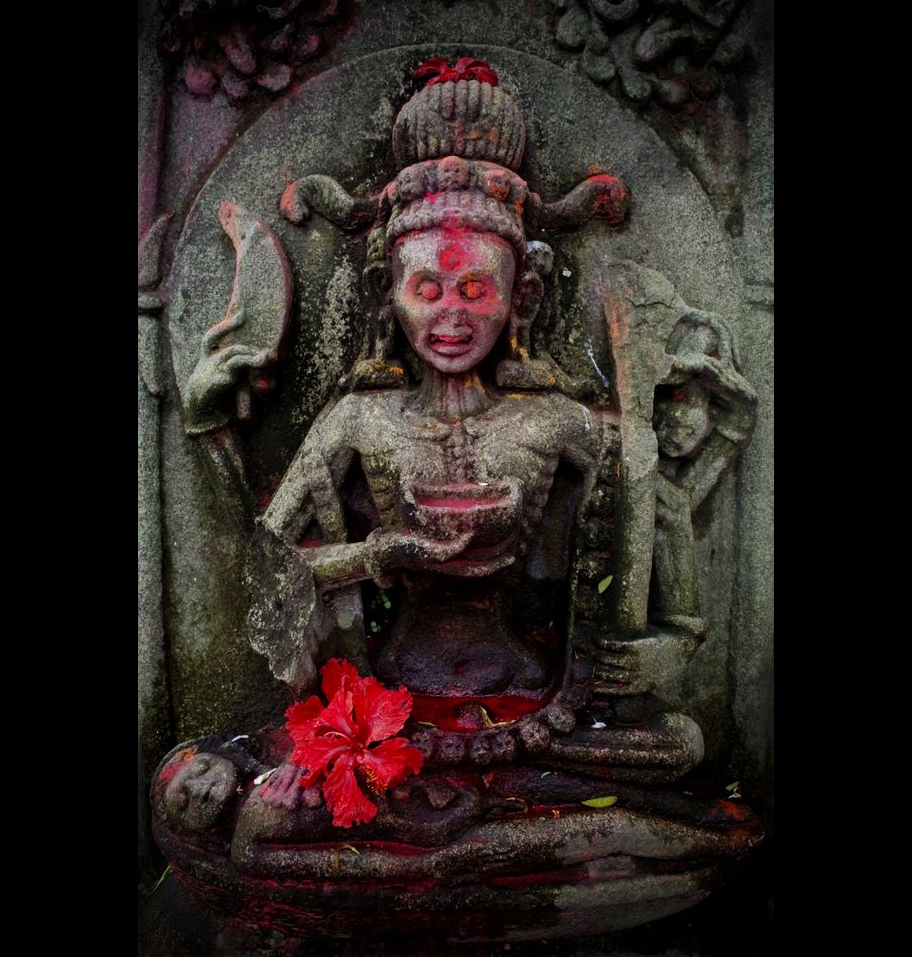
Tantra transformed South Asia’s major religions, and today elements of it can be found across Asia’s diverse cultures. However, it remains largely misunderstood in the West, where it is equated with sex. The popular ‘Tantra Festivals’ that take place nowadays all feature playgrounds of flesh and free love run in the name of wellness. Tantra in the modern day is mis-sold as an all-encompassing spiritual fix synonymous with sexual pleasure, which is far from the actual teachings of Tantra.
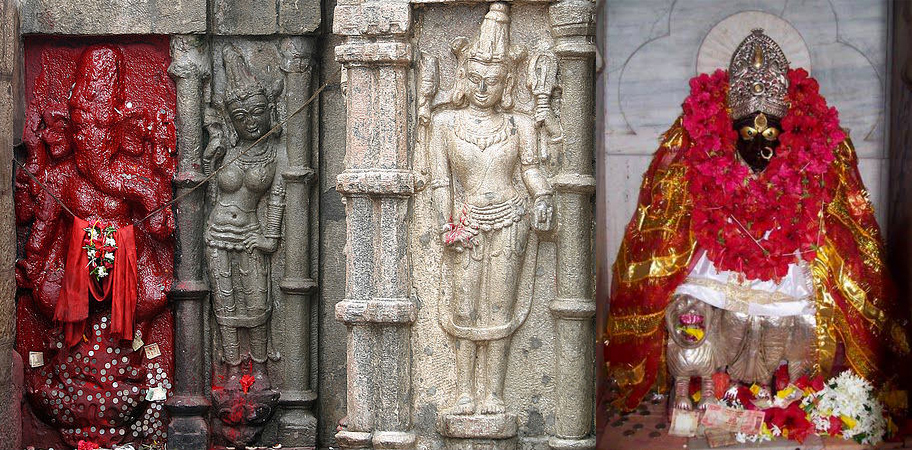
Tantra has been misunderstood as a ‘cult of ecstasy’ in the West since the 19th century. The Christian missionaries, Orientalist scholars and colonial officials wrote the first detailed interpretations of a diverse range of texts, rituals and traditions in India. They monolithically classified them as ‘Tantric’, often reductively dismissing them as promoting orgiastic and degenerate behaviour. This overwhelming negative colonial-era view would give way in the 20th century to a reappraisal of Tantra in the West, emphasising its apparent expression of countercultural free love.
I look forward to sharing more with you in my next article. Sending you all healing love and light xox
